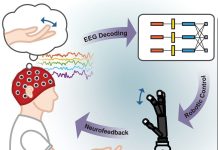
Research published in the journal PLOS Computational Biology indicates that many visual illusions are caused by limits in our eyes and visual neurons rather than by more complex psychological processes.
Scientists have long debated whether these illusions arise from neural processing in the eye and basic visual centers in the brain, or whether they involve higher-level mental processes, such as context and prior experience.
In this new study, Dr. Jolyon Troscianko, from the University of Exeter, co-developed a model suggesting that the illusions result from simple limits in neural responses rather than deep psychological processes.
Key Findings
Dr. Troscianko explains that our eyes transmit messages to our brain by causing neurons to fire at different speeds.
There is a limit to how quickly they can fire, and previous research hasn’t fully considered how this limit might affect our perception of color.
The model combines this “limited bandwidth” concept with information on how humans perceive patterns at different scales. It also assumes that our vision functions best when observing natural scenes.
The model was initially developed to predict how animals perceive color, but it was also found to accurately forecast many visual illusions seen by humans.
This revelation has overturned a lot of long-standing assumptions about how visual illusions operate.
Implications and Future Directions
These findings also provide insights into the popularity of high-definition televisions. As Dr. Troscianko points out, modern high dynamic range televisions can create bright white regions over 10,000 times brighter than their darkest black, which approaches the contrast levels of natural scenes.
This contrasts starkly with laboratory tests that show the highest contrasts humans can discern at a single spatial scale is around 200:1, and the neurons linking our eyes to our brains can handle only around 10:1.
The model demonstrates how neurons with limited contrast bandwidth can combine their signals to enable us to see these massive contrasts. However, the information is “compressed,” resulting in visual illusions.
The model reveals that our neurons have evolved to use every bit of their capacity, allowing us to perceive contrasts larger than 10,000:1 despite severe limitations in neural bandwidth and sensitivity.
These findings could significantly alter our understanding of visual perception and have potential implications for fields like digital media, where understanding the human visual system’s capabilities is critical.
If you care about eye health, please read studies about how aging eyes see as time goes by, and how to protect your eyes from diabetes.
For more information about nutrition, please see recent studies about the best time to take vitamins to prevent heart disease, and these antioxidants could help reduce dementia risk.
The study was published in PLoS Computational Biology.
Copyright © 2023 Knowridge Science Report. All rights reserved.



